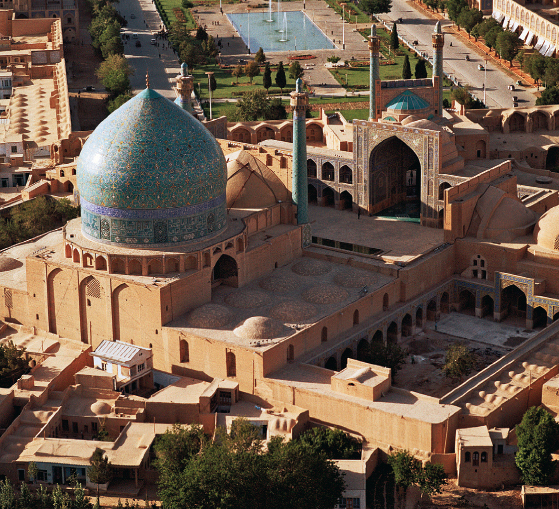Understanding World Societies:
Printed Page 248
The Social Hierarchy
In the Umayyad period, Muslim society was distinctly hierarchical. At the top of the hierarchy were the caliph’s household and the ruling Arab Muslims. Descended from Bedouin tribespeople, this class constituted the ruling elite. It was a relatively small group, greatly outnumbered by Muslim villagers and country people.

Begun in the late eighth century and added to over the centuries, the Great Mosque in Isfahan is one of the masterpieces of Islamic architecture. The huge dome and the vaulted niches around the courtyard are covered with blue, turquoise, white, and yellow tile. (© Roger Wood/Corbis)
Converts constituted the second class in Islamic society, one that grew slowly over time. Converts to Islam had to attach themselves to one of the Arab tribes in a subordinate capacity. From the Muslim converts eventually came the members of the commercial and learned professions — merchants, traders, teachers, doctors, artists, and interpreters of the shari’a. Second-
Dhimmis (zih-
How did the experience of Jews under Islam compare with that of Jews living in Christian Europe? Recent scholarship shows that, in Europe, Jews were first marginalized in the Christian social order and then completely expelled from it. In Islam, Jews, though marginalized, participated fully in commercial and professional activities, some attaining economic equality with their Muslim counterparts.